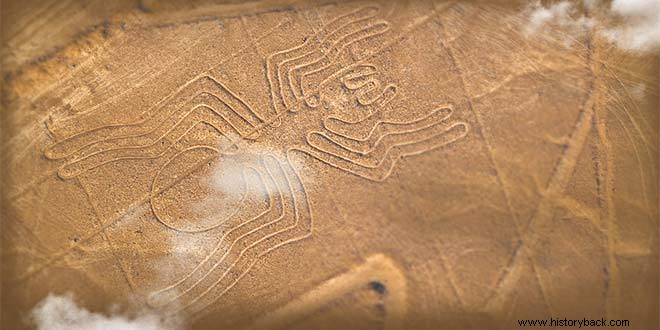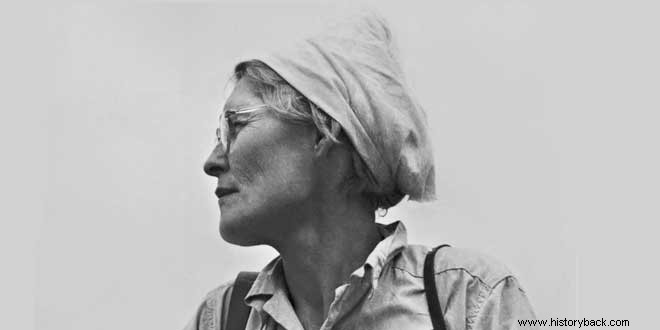Maria Reiche-Grosse Neumann or Maria Reiche She was born in Dresden (a German city that was also the birthplace of Max Uhle) on May 15, 1903. She studied at the Polytechnic School in her hometown and at the University of Hamburg, graduating in Mathematics. She arrived in Peru in 1932 as a governess for the children of the German consul in Cuzco. He began to be interested in Peruvian archeology when he translated for Julio C. Tello and later for Paul Kosok, in one of whose articles he became aware of the existence of gigantic lines and figures, located in a pampa between Nazca and Palpa in an area of 350 km2, from the coast to the foothills of the mountain range. She then traveled to Nazca in 1940, staying only a short time due to the restrictions of the war . She returned again in 1945 and raised a tent in the middle of the Ingenio pampa. Armed with a compass, tape, brushes, brooms and a field notebook, she began the work of a lifetime.
The Nazca lines and Maria Reiche
At first, the locals looked at her with mistrust and harassed her by calling her a "witch", because they were surprised to see her walking through the sand, cleaning some sections, taking measurements and making calculations.
In 1949 she published her first article on the Nazca lines: Mystery on the desert. A study of the ancient figures and strange delineated surface . Her investigations lasted for several decades, thanks to which we now have hundreds of maps, plans and photographs of the designs and figures. Throughout those years she was able to obtain the collaboration of the National Aerophotographic Service, which took shots at various scales. The fame of the site motivated the influx of tourists that at one point came to endanger the conservation of the site. Thanks to the collaboration of the then Tourism Promotion Fund, it was possible to build a viewpoint, and private investment allowed the installation of a small airport and a light aircraft service to fly over the area. With the sale of her books, María Reiche paid security guards to prevent the entry of strangers.
The Nazca lines have been the subject of various interpretations, the most insane suggest that it was a landing field for extraterrestrial ships.

Maria Reiche's conclusions about the Nazca Lines
María Reiche concluded that the figures were part of a gigantic astronomical calendar destined to fix the cycles and climatic changes in the agrarian societies of the Nazca civilization. Observing the stars, the ancient Nazquenses were able to define constellations, whose position helped them to govern their agricultural cycles, and it was these constellations that they represented in the pampas. His tireless research work on her earned him numerous distinctions such as the Congressional Medal of Honor in 1981; the magisterial palms in the degree of amauta and the civic medal of the city of Lima, both in 1986; the honorary doctorate awarded by the national universities of Trujillo (1983), San Marcos (1986) and Engineering (1989). In 1992 the government granted her the title of honorary citizen of Peru, made official with her definitive nationalization the following year. In December 1994, thanks to her efforts and efforts, UNESCO agreed to grant the Nazca lines the category of Cultural Heritage of Humanity. In recent years, due to her delicate state of health, María Reiche occupied a room in the tourist hotel in Nazca, being assisted by her sister Renata de Ella, who died in 1995.
Death of Maria Reiche
At the age of 95, on June 8, 1998, María Reiche died in Lima she, a cancer victim. A month before, UNESCO had decorated it with the Machu Picchu medal. The Peruvian government posthumously awarded him the order of merit for distinguished services in the degree of grand cross, "in consideration of the fact that, thanks to his scientific work, he discovered the Nazca lines, a unique archaeological zone in the world, making the humanity the cultural legacy of a forgotten people”. A month after her death, the “María Reiche” park was inaugurated in Lima, located on the Marina boardwalk, with an area of 28,000 m2, where Nazca figures worked to scale based on flowers can be seen.

